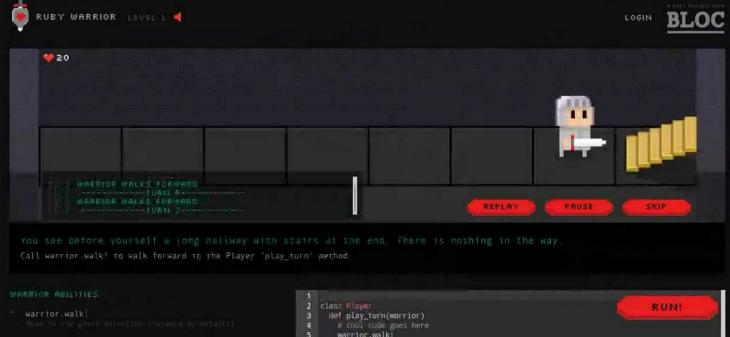
This post originally appeared on Code-love.
In an online chat session between Yukihiro Matsumoto and Keiju Ishitsuka in early 1993, a discussion ensued about the name of a programming language that Matsumoto was going to write. He wanted to satisfy his desire to have an object-oriented scripting language, something that would craft virtual objects composed of data, and help them interact with one another.
The alternatives at the time, Python and Perl, didn’t appeal to him; Python was too object-oriented and Perl having “the smell of a toy language.” Between “Coral” and “Ruby”, Matsumoto decided to go with the latter because it was the birthstone of one of his colleagues.
You have probably heard about Ruby, and you might be wondering—what is all the fuss?
For starters, it’s written in a very easy-to-use, intuitive manner
For beginners who have tried teaching themselves a programming language, there are many obvious barriers like the syntax and semantics of a language.
Ruby strives to eliminate some of those barriers, for example, by naming functions in a “natural-language”-like format, the is_a? function does exactly what it promises, returning a Boolean (TRUE or FALSE) telling you whether a given object is of a certain type.
The question mark at the end of the function is a Ruby idiosyncrasy that hints that the function always returns a Boolean. It may seem odd in the beginning, but as the amount of Ruby you read increases, the more natural this process will become.
Ruby is widely deployed ranging from applications in simulations, 3D modeling, business, robotics to Web applications and security. For example, Basecamp – a project management application is programmed entirely in Ruby.
Google SketchUp, a 3D modeling tool uses Ruby as its macro scripting API—programmers can add in scripts of their own to the SketchUp program, helping them do things such as automating routine modeling processes, similar to how macros work in Excel.
So how might you go about to learn Ruby, now that you are convinced that it is valued by the software community?
Resources to get you started
Though the usual suspects like Codecademy and Learn Ruby the Hard Way are good resources to learn Ruby, there are a bunch of other resources.
- Try Ruby lets you learn the basics straight from your Web browser, quick and dirty.
- Ruby Koans offers a series of exercises that each test the skills you’ve learned as you progress
- Ruby Warriors is a nine-level course styled as an 8-bit game
There are many more resources available, but the one that really stands out as a gem (incidentally also the name of self-contained libraries in Ruby) is RubyMonk.
RubyMonk follows a narrative style of teaching Ruby along with some programming basics. The premise is based on you having a “master” who gives you much needed encouragement if you go wrong and also gives you triumphant messages when you succeed at some of the exercises. RubyMonk draws from movies, and video games to keep you plugging away to learn Ruby.
What really makes it stand apart from other resources is the way the entire learning environment is structured. Each page in the chapter has some introduction, a new concept, an exercise to try out, some more concepts with exercises and wrapping it up by using all the elements learned in that chapter in a slightly challenging exercise. There are several levels – Ruby Primer, Ruby Primer: Ascent, Metaprogramming Ruby and Metaprogramming Ruby: Ascent.
Each of the levels deliver content indicative of their name and each chapter is sprinkled with practical exercises. The design of the exercises and their placement is what makes the learning experience on this website fun and engaging.
The exercises are just a little beyond the skill level you acquired in the lesson and require a little bit of thinking and are perfect for people who are just beginning to learn programming. They help easily transfer the theory you learned into practice.
Once, you’re done going through all of their material, you can be fairly confident that even if you can’t change the world with Ruby, you’ll at least have enough knowledge to create fun programs and venture into some complex ones with little additional effort.
Yet another reason to learn
Ruby serves as a wonderful background to migrate to the popular Ruby on Rails Web framework, which makes the learning curve for making web applications much easier.
Ruby on Rails was constructed with the explicit goal of making it as easy as possible to build an interactive web platform, and maintain it. It speaks to the Ruby philosophy of simple, intuitive building.
After you learn Ruby, you will be able to build your ideas rapidly, and efficiently. You will have learned a valuable skill that will help make building natural.
Top image credit: Shutterstock/Alexander Hoffmann
Get the TNW newsletter
Get the most important tech news in your inbox each week.





